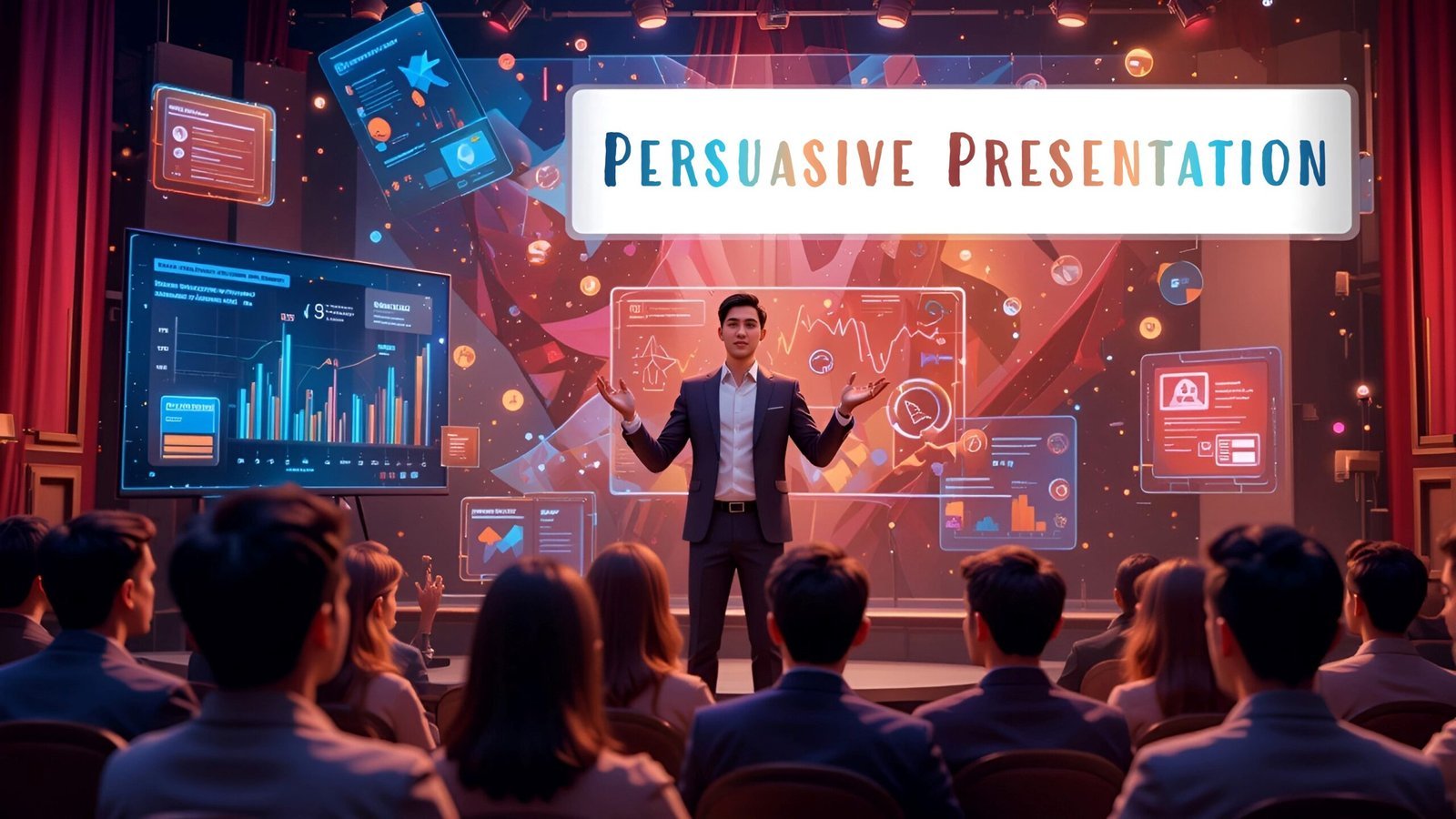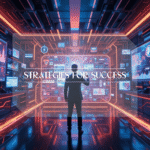Now Reading: Elevate Sales Presentations: Strategies for Maximum Impact
-
01
Elevate Sales Presentations: Strategies for Maximum Impact

Elevate Sales Presentations: Strategies for Maximum Impact
I. Introduction: The Power of Presentation Excellence
Let’s be honest, in the cutthroat world of sales, your presentation is often your make-or-break moment. Think of it as your stage – the place where you turn curious prospects into enthusiastic customers. You’re not just showcasing a product; you’re selling value, expertise, and a commitment to their success. But here’s the kicker: too many sales presentations are just…blah. They’re boring feature dumps, packed with confusing jargon, and totally out of sync with what the customer actually cares about. In today’s information-overloaded world, a mediocre presentation is like shouting into the void – completely invisible.
It’s time for a serious upgrade. It’s time to elevate your sales presentations from snooze-fests to must-sees. Imagine presentations that grab attention from the get-go, that tell a story that hits home, that zero in on customer headaches, and most importantly, drive sales like a well-oiled machine. Consider this article your personal guide to presentation greatness. We’re going to unpack proven, real-world strategies that will give you the power to make a real impact, connect with your audience on a human level, and consistently deliver sales presentations that don’t just inform – they ignite action and close deals. Ready to revolutionize your presentation style and unlock a whole new level of sales wins? Let’s dive in.
II. Foundation First: Understanding Your Audience is Paramount
Hold up! Before you even think about fancy slides or killer opening lines, you’ve got to get crystal clear on your audience. Why? Because a presentation in isolation, no matter how slick, is likely to flop. Truly effective sales presentations? They aren’t about you; they are 100% about your audience – their needs, their gripes, their dreams, and how they see the world. Spending quality time upfront to really understand your audience isn’t just a nice-to-have – it’s the bedrock of every presentation that actually lands and converts. As sales expert Jill Konrath says, “What differentiates sellers today is their ability to bring fresh ideas.” [1] And fresh ideas come from understanding your customer deeply.
Why Audience Research is Non-Negotiable:
- Relevance Rules: Generic pitches? Easily ignored. Audience research lets you laser-focus your message to their specific industry, company, job role, even their individual to-do list. Suddenly, your presentation isn’t just another interruption – it’s instantly valuable and relevant.
- Personalization = Connection: People buy from people they feel understand them. Research lets you make your presentation personal, showing you’ve done your homework and genuinely care about their world. This builds rapport and trust right off the bat.
- Pain Points: Your Presentation GPS: Think of your audience’s pain points as your presentation’s GPS. Research uncovers their challenges, guiding you to directly address their frustrations and position your solution as the relief they’ve been searching for. Zendesk emphasizes this, stating, “The product you are promoting is designed to solve a problem. Start there. Make it personal.” [2]
Actionable Audience Research Tactics:
- Company Deep Dive: Don’t just skim the website. Dive deep into their industry, recent news, annual reports, mission, and values. Get a handle on their market position, who their competitors are, and their big-picture business goals.
- Prospect Power-Ups: LinkedIn is your secret weapon. Scout out individual prospects. Understand their roles, what they’re responsible for, their career history, who they connect with, and even what they’re posting about. Look for clues about their priorities and communication style.
- Industry Intel Gathering: Become an industry insider. Devour industry reports, trade publications, and online forums related to your audience’s world. Pinpoint current trends, challenges, and opportunities shaking up their businesses.
- Needs Analysis – Your Secret Weapon: Whenever possible, ditch the guesswork and have a real conversation before crafting your presentation. A quick needs analysis or discovery call lets you ask direct questions to uncover their specific needs, pain points, and what “success” looks like to them.
By putting in the work upfront to research your audience, you transform your sales presentation from a shot in the dark to a laser-guided conversation. You shift from talking at your audience to connecting with them, ensuring your message lands powerfully and drives maximum impact.
III. Crafting a Compelling Narrative: Storytelling & Value Proposition
Let’s ditch the yawn-inducing feature lists and dry technical specs – truly amazing sales presentations? They tell a story. Humans are hardwired for stories. Narratives grab our attention, stir our emotions, and make information stick in our brains way better than boring facts and figures ever could. When it comes to sales, storytelling is your secret weapon for building connections, showcasing value, and making your presentation unforgettable. As Gartner points out, “Every good sales presentation is built on top of a good story.” [3]
Why Storytelling is Sales Gold:
- Engagement Rocket Fuel: Stories pull people in. A well-spun narrative creates curiosity, sparks interest, and keeps your audience glued to your presentation, banishing presentation-induced brain fog.
- Memorability Magic: Facts fade, but stories? They stick. People remember narratives far more than bullet points. By weaving your value proposition into a compelling story, you make sure your message lingers long after you’ve left the room.
- Emotional Connection Powerhouse: Let’s face it, sales decisions are often emotional at their core. Stories tap into emotions – empathy, hope, relief, excitement – forging a deeper connection with your audience and making your pitch way more persuasive. The Brooks Group emphasizes that stories “evoke emotions such as empathy, trust, and excitement, which can significantly influence purchasing decisions.” [4]
How to Weave Your Sales Story:
- Start with Their Challenge: Kick off your story by painting a vivid picture of the problem your customer is wrestling with. Make it real, use language that resonates, and help them feel the pain you’re about to solve.
- Make Your Solution the Hero: Position your product or service as the answer to their prayers – the hero of their story. Shine a spotlight on the benefits it delivers, not just the bells and whistles. Show them exactly how it eases their pain and catapults them towards their goals.
- Sprinkle in Case Studies & Success Stories: Don’t just say you can fix their problem, prove it. Pepper in compelling case studies and real-life success stories of other customers who’ve thrived thanks to your solution. Quantifiable results and relatable stories build instant credibility.
- Structure for Maximum Impact: Think classic story arc:
- The Setup: Introduce the customer’s starting point and the challenge holding them back.
- The Turning Point: Unveil your solution and how it tackles their challenge head-on.
- The Resolution: Showcase the amazing results and the transformed state they achieve after using your solution.
Value Proposition – Make it Shine:
Woven throughout your story, your value proposition needs to be crystal-clear and compelling. What makes you different? What unique value do you bring? Zero in on the outcomes and ROI for your customer. Instead of “Our software has cutting-edge features,” try “Our software supercharges your team’s efficiency, slashing operational costs by 20% and freeing them up to focus on what truly matters – growth and innovation.” Benefit-driven language is what grabs attention and sparks action.
By becoming a master storyteller and weaving a clear, compelling value proposition into your narrative, you transform your sales presentation from a data dump into an engaging, persuasive, and utterly irresistible experience.
IV. Presentation Structure & Delivery: Engaging and Impactful
Even the most captivating story can fall flat if your presentation is a disorganized mess or your delivery is…well, let’s just say less than inspiring. A truly effective sales presentation isn’t just about what you say, it’s about how you say it and how you structure the information for maximum impact. Think of a well-structured presentation as a roadmap – it keeps your audience on track, guides them logically through your message, and leads them to a clear destination: a “yes.”
The Power-Packed 6-Step Sales Presentation Structure:
- Knockout Opening (First 2-3 Minutes): Hook them instantly. Start with a surprising stat, a thought-provoking question, a relatable story, or a quick win from a customer. Clearly state what you’re there to talk about and why it matters to them. Set the stage for a valuable, engaging session.
- Problem Deep Dive (Customer Pain Focus): Make the customer’s challenges real and urgent. Present data, market trends, or paint relatable scenarios that highlight the pain points you’re tackling. Help them feel the urgency to solve this problem.
- Solution Spotlight (Benefits First): Now, introduce your product or service as the direct solution to the problems you’ve just laid out. Hammer home the benefits for the customer – how will it make their lives easier, solve their headaches, and propel them towards their goals? Features are supporting actors here, benefits are the stars.
- Proof Power (Credibility Boosters): Back up your promises with solid proof. Showcase relevant data, research findings, glowing testimonials, case studies with hard numbers, and social proof (awards, industry recognition). Build trust and show you’re the real deal.
- Summarize & Seal the Deal (Value Reinforcement): Reiterate your core value propositions and the key benefits one last time for emphasis. Summarize the main takeaways, ensuring your audience leaves with a crystal-clear understanding of your offering’s value and the key wins for them.
- Call to Action (Crystal Clear Next Steps): Don’t leave them hanging! End with a clear, compelling call to action. What exactly do you want them to do next? Schedule a follow-up? Book a demo? Start a free trial? Make it simple and inviting to take the next step. Gartner emphasizes the importance of the call to action, stating your presentation should “focus on providing information such as the value you create and what the buyer should do next.” [3]
Delivery Techniques That Command Attention:
- Confident Presence: Preparation is your secret weapon. Know your stuff inside and out. Practice your delivery until it flows naturally and conversationally. Project confidence through your body language, solid eye contact, and a strong, clear voice.
- Engaging Energy: Ditch the monotone drone and robotic delivery. Be enthusiastic, dynamic, and real. Vary your pace, use vocal inflection to emphasize key points, and inject energy into your delivery. Make it feel like a dynamic conversation, not a dry lecture.
- Visuals That Pop – Less is Definitely More: Use visuals strategically to amplify your message, not to distract. Go for clean, uncluttered slides. Use powerful visuals – charts, graphs, striking images – that punch up your message. Ditch the text-heavy slides. Templates can be your friend for structure and a consistent look. HubSpot suggests keeping slides “scannable: Try to use 3-6 points per slide and use imagery to help convey your key message effectively.” [5]
- Objection Judo – Be Ready: Anticipate those tricky questions and prepare smart, empathetic responses. See objections as golden opportunities to clarify and connect on a deeper level. Handle them with grace and confidence.
- Time Mastery – Be Respectful: Value your audience’s time like gold. Stick to your time limit. Be concise, cut the fluff, and respect their schedules. Knowing when to wrap up shows professionalism and respect.
- Tech Savvy – Use Tools Like a Pro: Leverage presentation software and demo tools to your advantage. Make sure tech enhances your presentation, not sabotages it. Always have a plan B for tech hiccups.
By nailing both your presentation structure and delivery, you transform your presentations from just okay to truly engaging, persuasive, and high impact, dramatically boosting your sales success.
V. Elevating Engagement: Making it Interactive and Memorable
Let’s face it, in today’s world of endless distractions, passive presentations are quickly forgotten. To truly elevate your sales presentations, you’ve got to make them interactive and memorable. Engagement is the secret sauce to keeping your audience locked in, ensuring your message resonates, and turning presentations from one-way broadcasts into dynamic, two-way conversations.
Engagement Tactics That Work Wonders:
- Question Power – Open the Dialogue: Don’t just talk at your audience, talk with them. Sprinkle open-ended questions throughout your presentation. Think: “What are your biggest roadblocks with X?”, “How would hitting Y goal change things for your team?” Questions spark thinking, invite participation, and turn your audience from passive listeners into active contributors.
- Dialogue, Not Just Demo – Encourage Real Interaction: Create space for real back-and-forth. Pause intentionally and invite questions, comments, even challenges. Listen actively to their responses and engage thoughtfully. Show them you genuinely value their input and perspective.
- Polls & Quick Surveys – Instant Audience Pulse: For larger groups or virtual presentations, interactive polls and quick surveys are gold. Tools like Mentimeter or Slido make this easy. Get real-time feedback, check for understanding, and inject a fun, interactive element.
- Multimedia Magic – Variety is the Spice (Use it Wisely): Smart use of multimedia can seriously boost engagement. Drop in short, punchy video clips, eye-catching animations, or audio snippets to break things up and cater to different learning styles. But remember, multimedia is a spice – use it sparingly and make sure it directly supports your message, not just adds noise.
- Visuals That Wow – Dynamic and Captivating Slides: Go beyond just “clean design” – think dynamic visuals. Use animations to reveal info step-by-step, create visual metaphors that stick, and use images that trigger emotion and reinforce your story. Keep your slides visually stimulating and ditch static, text-heavy templates.
- Personalized Energy – Match Your Audience’s Vibe: Read the room, whether it’s in-person or virtual. Adapt your delivery to match the audience’s energy level. If they’re engaged and asking questions, amp up your enthusiasm. If they seem more reserved, shift to a more thoughtful, measured approach. Be flexible and tune into their cues.
- Anecdotes & Humor – Human Connection (Use with Care): Well-placed, relevant anecdotes or a touch of humor can humanize your presentation and build rapport fast. Share short, relatable stories or inject light humor (always keeping it professional and culturally appropriate) to make your presentation more memorable and enjoyable. But humor is a tightrope walk – use it cautiously and always keep it audience-appropriate and brand-aligned.
- Conversational Style – Authenticity Wins Hearts: Aim for a natural, conversational tone throughout. Talk like a human, ditch the corporate jargon, and connect with your audience person-to-person. Authenticity builds trust, making your message more believable and impactful. Onsightapp.com emphasizes knowing your audience and tailoring your approach, advising, “Take the time to research the audience’s needs, preferences, and pain points and that will guide your content and delivery.” [6]
By actively weaving in these engagement tactics, you transform your sales presentations from passive info dumps into vibrant, interactive experiences that captivate your audience, boost message recall, and skyrocket your presentation effectiveness.
VI. Post-Presentation Power: Follow-Up for Maximum Conversion
The presentation might be over, but the sales journey? Not even close to finish. In fact, what you do after you step off the stage (or end the virtual meeting) is often just as critical as the presentation itself. Smart post-presentation follow-up is the crucial bridge that links a killer presentation to a signed deal. It’s your prime chance to solidify your message, tackle any lingering questions, and keep that sales momentum going strong.
Actionable Follow-Up Strategies That Convert:
- Lightning-Fast Follow-Up – Strike While it’s Hot: Within 24 hours – ideally even sooner – fire off a follow-up email with presentation materials (slides, handouts, key takeaways). Re-ignite those key messages while the presentation is still fresh in their minds. Spotio highlights the importance of speed, noting “35% to 50% of sales go to the vendor that responds first.” [7]
- Personalized Follow-Up – Ditch the Generic Template: Step away from the mass emails. Make your follow-up personal. Reference specific points you discussed, address any questions that came up, and tailor your message to each person or company.
- Crystal-Clear Next Steps – Guide the Way Forward: Be proactive and suggest clear next steps. Invite them to a follow-up call, offer a personalized demo, or point them to helpful resources. Make it dead-simple for them to keep the ball rolling and move closer to a decision.
- CRM is Your Follow-Up Fortress – Stay Organized & Consistent: Your CRM is your best friend here. Use it to meticulously track your follow-up game plan. Schedule reminders, log every interaction, and monitor engagement. Consistent follow-up is key, and your CRM keeps you on track and prevents leads from slipping through the cracks.
- Persistent, Not Pushy – Stay Top-of-Mind the Right Way: Don’t be afraid to follow up more than once, but always keep it professional and value-driven. Each follow-up should offer something extra – a relevant article, industry insight, or answers to new questions. Persistence, when combined with genuine value and respect, keeps you top-of-mind without being annoying. As HubSpot points out, “A single additional follow-up message can increase reply rates by 65.8%.” [8]
Smart post-presentation follow-up turns a one-time presentation into an ongoing conversation, nurturing leads, strengthening relationships, and dramatically boosting your conversion rates. It screams professionalism, reinforces your value, and ultimately, maximizes the ROI of every presentation you deliver.
VII. Conclusion: Presentation Mastery: Your Path to Sales Excellence
Elevating your sales presentations isn’t just about tweaking your slides or polishing your speaking style – it’s about fundamentally changing how you connect with your audience and communicate your unique value. In today’s hyper-competitive sales landscape, presentation mastery isn’t a bonus – it’s mission-critical for consistent wins and standing head and shoulders above the competition.
By making the audience understanding your #1 priority, crafting stories that captivate, structuring your presentations for maximum impact, delivering with genuine engagement, and mastering post-presentation follow-up, you move beyond the realm of ordinary presentations and step into presentation excellence. These aren’t overnight fixes, but a complete toolkit for presentation mastery – a journey of continuous improvement and refinement.
Embrace these strategies, commit to sharpening your presentation skills, and watch as you transform into a sales presenter who commands attention, builds lasting relationships, and consistently maximizes sales impact. Elevate your presentations, elevate your sales results, and elevate your entire sales career. Presentation mastery? It’s your direct route to sales excellence.















